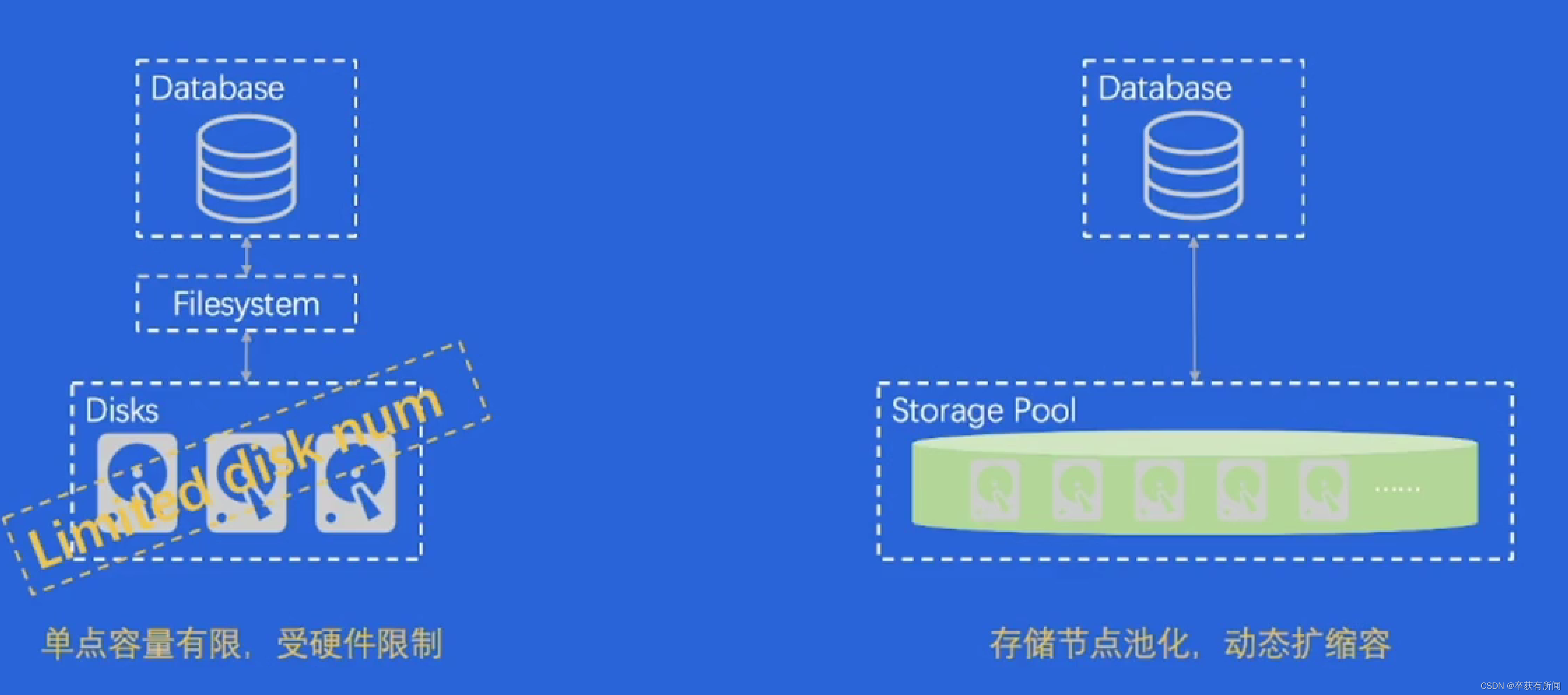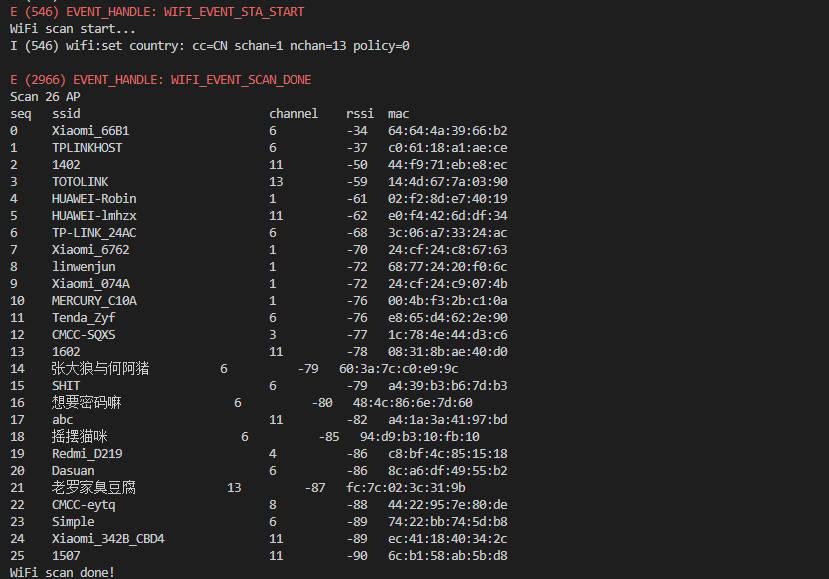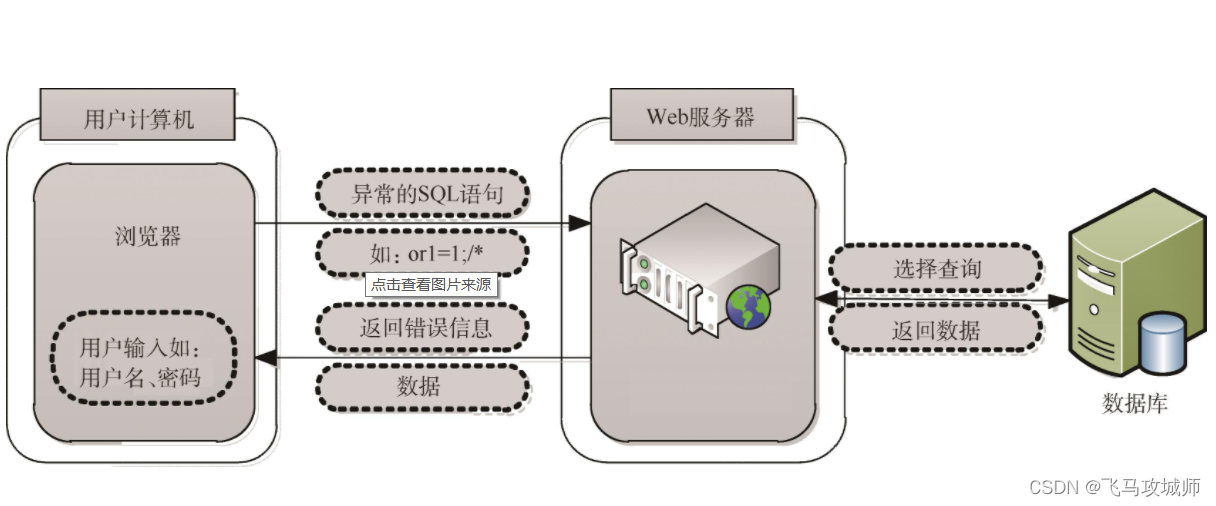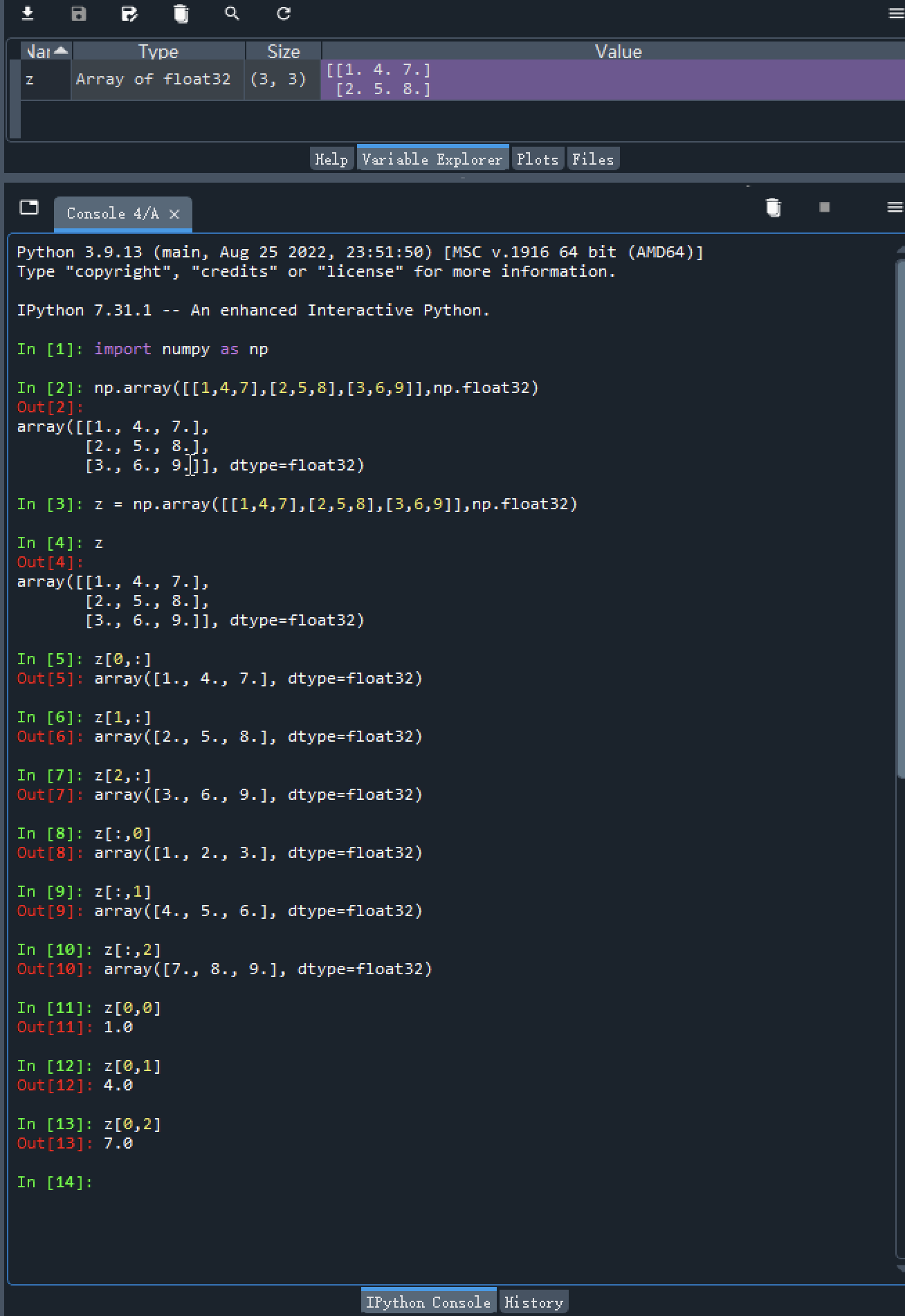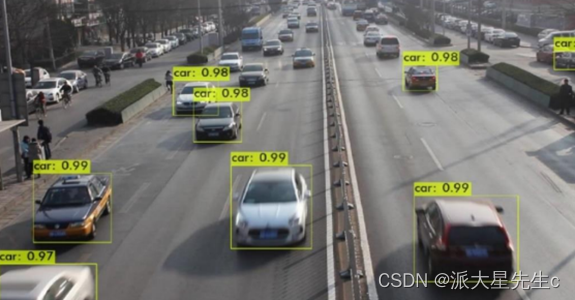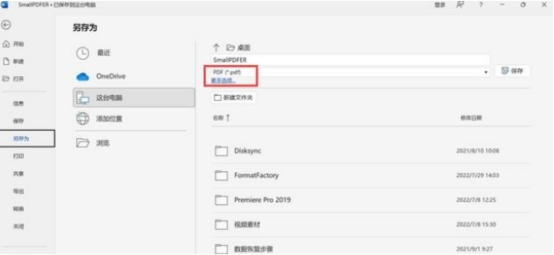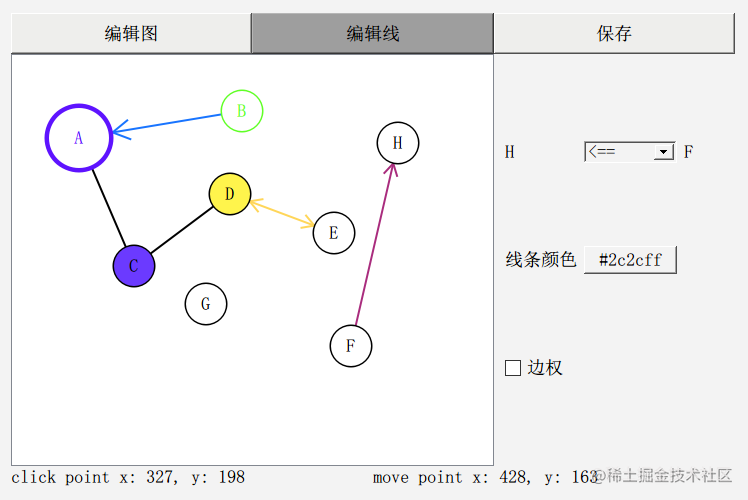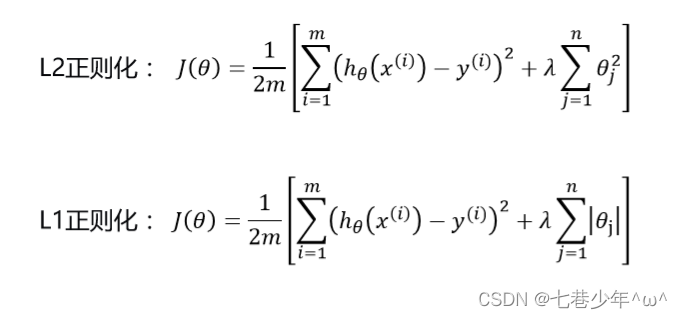一、QCustomPlot简介
QCustomPlot是QT下一个方便易用的绘图工具,该绘图库专注于制作美观,出版品质的2D图表,图表和图表,以及为实时可视化应用程序提供高性能。它可以导出为各种格式,如矢量化的PDF文件和光栅化图像,如PNG,JPG和BMP。
官网:https://www.qcustomplot.com
下载:

压缩包中有QCustomPlot的官方使用示例:plot-examples和核心文件: qcuamplesstomplot.h、qcustomplot.cpp,使用方法是通过添加现有文件将 qcustomplot.h、qcustomplot.cpp加入工程,并在pro文件中加入printsupport,放置widget并提升为QCustomPlot。
外网网速不好,也可以通过csdn下载:https://download.csdn.net/download/linyibin_123/87388205
二、QtCharts简介
Qt Charts是Qt自带的组件库,其中包含折线、曲线、饼图、棒图、散点图、雷达图等各种常用的图表。它的核心是 QChartView(显示图表)和QChart(管理数据),QChartView是一个能够显示图表的widget,是用来显示数据,而QChart类用来管理图表的数据序列(series)、图例(legends)和坐标轴(axes)。
三、QCustomPlot 与 QCharts的对比
1.性能:
1)QCustomPlot是一个比较完善的框架,其框架和缓存化的处理使其处理性能大幅度提升,支持十万以上的数据量。
2)QtCharts只是一个半成品,不论是否有bug,QtCharts在两千个点以内是可以使用的,超过两千个点就存在刷新卡顿的问题。
2.功能:
QChart可绘制的图标种类比QCustomPlot多。
3.使用:
QChar无需配置,是Qt自带的,QCustomPlot需要配置两个源文件:qcustomplot.h和qcustomplot.cpp。
四、QCustomPlot的使用
官网的示例绘制的图表都相对复杂,以下demo封装一些常用的图表:柱状图、实时曲线图、饼状图。
1.界面效果
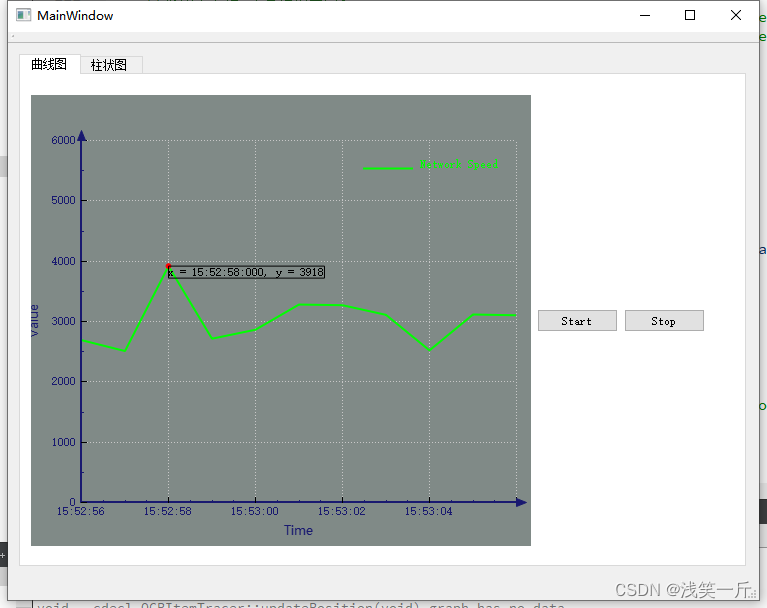
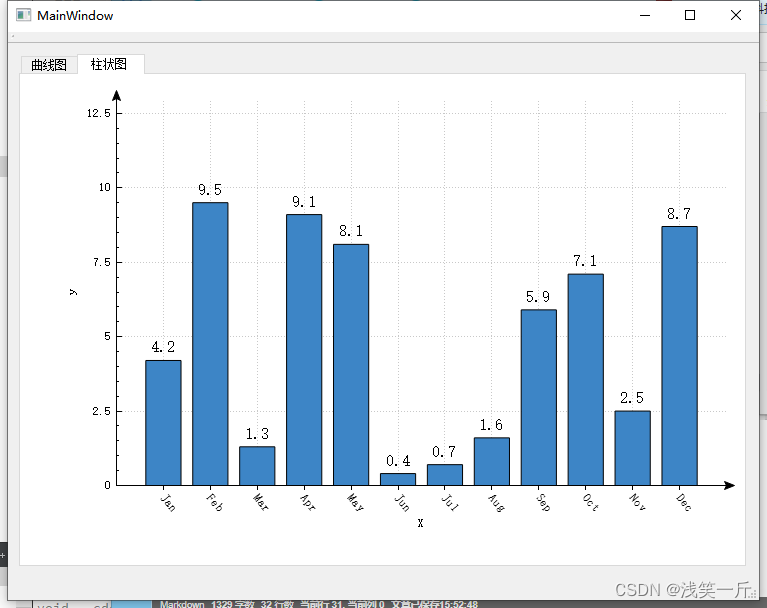
2.核心代码
ctcumtomplot.h
#ifndef CTCUMTOMPLOT_H
#define CTCUMTOMPLOT_H
#include <QObject>
#include <QMouseEvent>
#include "qcustomplot.h"
#include <QTimer>
#include "commondef.h"
#include "custombars.h"
class CtCumtomPlot : public QObject
{
Q_OBJECT
public:
explicit CtCumtomPlot();
~CtCumtomPlot();
static CtCumtomPlot& getInstance();
//曲线
void CreateRealCurve(QCustomPlot *pCustomPlot);
void setCurve(GRAPH_CURVE_T graphPara);
//柱状图
void CreateHistogram(QCustomPlot *pCustomPlot, GRAPH_HISTOGRAM_T graphPara);
public slots:
void mouseMove(QMouseEvent *e);
private:
//曲线
QCustomPlot* m_pCurveCP;
QCPItemTracer* m_pCurveT;
QCPItemText* m_pCurveTL;
//柱状图
QCustomPlot* m_pHistogramCP;
};
#endif // CTCUMTOMPLOT_H
ctcumtomplot.cpp
#include "ctcumtomplot.h"
#include <QTime>
CtCumtomPlot::CtCumtomPlot()
{
}
CtCumtomPlot::~CtCumtomPlot()
{
if(m_pCurveT)
delete m_pCurveT;
if(m_pCurveTL)
delete m_pCurveTL;
if(m_pCurveCP)
delete m_pCurveCP;
}
CtCumtomPlot &CtCumtomPlot::getInstance()
{
static CtCumtomPlot s_obj;
return s_obj;
}
/**********************
*实时曲线
***********************/
void CtCumtomPlot::CreateRealCurve(QCustomPlot *pCustomPlot)
{
m_pCurveCP = pCustomPlot;
//设置布局
pCustomPlot->plotLayout()->insertRow(0);
pCustomPlot->plotLayout()->insertColumn(0);
pCustomPlot->axisRect()->setAutoMargins(QCP::msBottom | QCP::msRight);
pCustomPlot->plotLayout()->setRowStretchFactor(0, 0.1);
pCustomPlot->plotLayout()->setColumnStretchFactor(0, 0.1);
//设置图形标注
pCustomPlot->legend->setVisible(true);
pCustomPlot->legend->setFont(QFont("Helvetica", 9));
pCustomPlot->legend->setTextColor(0x00ff00);
pCustomPlot->legend->setFillOrder(QCPLayoutGrid::foColumnsFirst); //横向画图
pCustomPlot->legend->setBorderPen(Qt::NoPen);//设置边框
pCustomPlot->legend->setIconSize(50, 20);
pCustomPlot->legend->setBrush(QBrush(Qt::transparent));//设置背景透明
//设置背景
pCustomPlot->setBackground(QBrush(QColor(128, 138, 135)));
//设置坐标轴颜色\画笔\末端样式
pCustomPlot->xAxis->setBasePen(QPen(QColor("#191970"), 2)); // 轴线画笔
pCustomPlot->xAxis->setSubTickPen(QPen(QColor("#191970"), 1)); // 轴刻度的画笔
pCustomPlot->xAxis->setSubTickPen(QPen(QColor("#191970"), 1)); // 轴子刻度线的画笔
pCustomPlot->xAxis->setTickLabelColor(QColor("#191970")); // 坐标轴上字体
pCustomPlot->yAxis->setBasePen(QPen(QColor("#191970"), 2)); // 轴线画笔
pCustomPlot->yAxis->setSubTickPen(QPen(QColor("#191970"), 1)); // 轴刻度的画笔
pCustomPlot->yAxis->setSubTickPen(QPen(QColor("#191970"), 1)); // 轴子刻度线的画笔
pCustomPlot->yAxis->setTickLabelColor(QColor("#191970")); // 坐标轴上字体
pCustomPlot->xAxis->setUpperEnding(QCPLineEnding::esFlatArrow);
pCustomPlot->yAxis->setUpperEnding(QCPLineEnding::esFlatArrow);
//添加一条曲线
m_pCurveCP->addGraph();
//设置右上角图形标注名称
m_pCurveCP->graph(0)->setName(QString::fromLocal8Bit("Network Speed"));
//设置画笔颜色
m_pCurveCP->graph(0)->setPen(QPen(Qt::green, 2));
//设置坐标轴时间显示
QSharedPointer<QCPAxisTickerTime> timeTick(new QCPAxisTickerTime);
timeTick->setTimeFormat("%h:%m:%s");
m_pCurveCP->xAxis->setTicker(timeTick);
//设置坐标轴描述
m_pCurveCP->xAxis->setLabelFont(QFont("Microsoft YaHei", 10));
m_pCurveCP->yAxis->setLabelFont(QFont("Microsoft YaHei", 10));
m_pCurveCP->xAxis->setLabelColor(QColor("#191970"));
m_pCurveCP->yAxis->setLabelColor(QColor("#191970"));
m_pCurveCP->xAxis->setLabel("Time");
m_pCurveCP->yAxis->setLabel("Value");
//显示子刻度
m_pCurveCP->xAxis->setSubTicks(true);
m_pCurveCP->yAxis->setSubTicks(true);
//设置基本坐标轴(左侧Y轴和下方X轴)可拖动、可缩放、曲线可选、legend可选、设置伸缩比例,使所有图例可见
m_pCurveCP->setInteractions(QCP::iRangeDrag | QCP::iRangeZoom | QCP::iSelectAxes |
QCP::iSelectLegend | QCP::iSelectPlottables);
//设置游标
m_pCurveT = new QCPItemTracer(m_pCurveCP);
m_pCurveT->setPen(QPen(Qt::red));//圆圈轮廓颜色
m_pCurveT->setBrush(QBrush(Qt::red));//圆圈圈内颜色
m_pCurveT->setStyle(QCPItemTracer::tsCircle);//圆圈
m_pCurveT->setSize(5);//设置大小
//游标说明
m_pCurveTL = new QCPItemText(m_pCurveCP);
m_pCurveTL->setLayer("overlay");//设置图层为overlay(频繁刷新需要)
m_pCurveTL->setPen(QPen(Qt::black));//设置游标说明颜色
m_pCurveTL->setPositionAlignment(Qt::AlignLeft | Qt::AlignTop);//左上
m_pCurveTL->position->setParentAnchor(m_pCurveT->position);//将游标说明固定在游标上,实现自动跟随
connect(m_pCurveCP, SIGNAL(mouseMove(QMouseEvent*)), this, SLOT(mouseMove(QMouseEvent*)));
//使用上下轴 左右轴范围同步
//connect(m_pCurveCP->xAxis, SIGNAL(rangeChanged(QCPRange)), m_pCurveCP->xAxis2, SLOT(setRange(QCPRange)));
//connect(m_pCurveCP->yAxis, SIGNAL(rangeChanged(QCPRange)), m_pCurveCP->yAxis2, SLOT(setRange(QCPRange)));
}
void CtCumtomPlot::setCurve(GRAPH_CURVE_T graphPara)
{
if(m_pCurveCP)
{
//设置数据
m_pCurveCP->graph(0)->addData(graphPara.X, graphPara.Y);
//删除10秒之前的数据
m_pCurveCP->graph(0)->removeDataBefore(static_cast<int>(graphPara.X - 10));
m_pCurveCP->yAxis->setRange(0, 6000);
//设置Y轴有7个坐标
m_pCurveCP->yAxis->ticker()->setTickCount(7);
m_pCurveCP->graph(0)->rescaleKeyAxis();
//设置横坐标范围
m_pCurveCP->xAxis->setRange(graphPara.X, 10, Qt::AlignRight);//void QCPAxis::setRange (double position, double size, Qt::AlignmentFlag alignment )
//重绘
m_pCurveCP->replot();
}
}
void CtCumtomPlot::mouseMove(QMouseEvent *e)
{
//鼠标坐标转化为CustomPlot内部坐标
double x = m_pCurveCP->xAxis->pixelToCoord(e->pos().x());
//将游标和该曲线图层连接
m_pCurveT->setGraph(m_pCurveCP->graph(0));
//将游标横坐标设置成刚获得的横坐标数据x
m_pCurveT->setGraphKey(x);
//游标的纵坐标可以通过曲线数据线性插值自动获得
m_pCurveT->setInterpolating(true);
//使得刚设置游标的横纵坐标位置生效
m_pCurveT->updatePosition();
//更新游标说明的内容
double xValue = m_pCurveT->position->key();
double yValue = m_pCurveT->position->value();
//x坐标转时间,游标显示
QTime time1(0, 0, 0, 0);
QTime newTime = time1.addMSecs(static_cast<int>(xValue*1000));
m_pCurveTL->setText(QString("x = %1, y = %2").arg(newTime.toString(QString::fromLatin1("hh:mm:ss:zzz"))).arg(yValue));
//重绘
m_pCurveCP->replot();
}
/**********************
*柱状图
***********************/
void CtCumtomPlot::CreateHistogram(QCustomPlot *pCustomPlot, GRAPH_HISTOGRAM_T graphPara)
{
m_pHistogramCP = pCustomPlot;
//使用xAxis、yAxis作为柱状图的x轴、y轴
QCPAxis *xAxis = m_pHistogramCP->xAxis;
QCPAxis *yAxis = m_pHistogramCP->yAxis;
CustomBars *pCusbars = new CustomBars(xAxis, yAxis);
pCusbars->setName("Cusbars");
pCusbars->setPen(QPen(QColor(0, 0, 0).lighter(150))); //设置柱状图的边框颜色
pCusbars->setBrush(QColor(61, 133, 198)); //设置柱状图背景颜色
QSharedPointer<QCPAxisTickerText> textTicker(new QCPAxisTickerText);
textTicker->addTicks(graphPara.VecX, graphPara.VecXLabels);
xAxis->setTicker(textTicker); //设置为文字轴
xAxis->setTickLabelRotation(50); //轴刻度文字旋转50度
xAxis->setSubTicks(true); //显示子刻度
xAxis->setTickLength(0, 4); //轴内外刻度的长度分别是0,4
xAxis->setRange(0, 13); //设置x轴范围
xAxis->setLabel("X");
xAxis->setUpperEnding(QCPLineEnding::esSpikeArrow); //设置轴顶端箭头
yAxis->setRange(0, 13); //设置y轴范围
yAxis->setPadding(35); //轴的内边距
yAxis->setLabel("y");
yAxis->setUpperEnding(QCPLineEnding::esSpikeArrow);
pCusbars->setData(graphPara.VecX, graphPara.VecY);
}
注意:removeDataBefore已经不被支持,需要在qcustomplot.h和qcustomplot.cpp中添加
custombars.h
#ifndef CUSTOMBARS_H
#define CUSTOMBARS_H
#include "qcustomplot.h"
class CustomBars : public QCPBars
{
public:
explicit CustomBars(QCPAxis *keyAxis, QCPAxis *valueAxis);
//设置文字对齐方式
void setTextAlignment(Qt::Alignment alignment);
Qt::Alignment textAligment() const;
//设置文字与柱状图的间距
void setSpacing(double spacing);
double spacing() const;
//设置字体
void setFont(const QFont &font);
QFont font() const;
protected:
Qt::Alignment m_textAlign;
double m_spacing;
QFont m_font;
virtual void draw(QCPPainter *painter) Q_DECL_OVERRIDE;
};
#endif // CUSTOMBARS_H
custombars.cpp
#include "custombars.h"
CustomBars::CustomBars(QCPAxis *keyAxis, QCPAxis *valueAxis)
: QCPBars (keyAxis, valueAxis),
m_textAlign(Qt::AlignCenter),
m_spacing(6),
m_font(QFont(QLatin1String("sans serif"), 12))
{
}
void CustomBars::setTextAlignment(Qt::Alignment alignment)
{
m_textAlign = alignment;
}
Qt::Alignment CustomBars::textAligment() const
{
return m_textAlign;
}
void CustomBars::setSpacing(double spacing)
{
m_spacing = spacing;
}
double CustomBars::spacing() const
{
return m_spacing;
}
void CustomBars::setFont(const QFont &font)
{
m_font = font;
}
QFont CustomBars::font() const
{
return m_font;
}
void CustomBars::draw(QCPPainter *painter)
{
if (!mKeyAxis || !mValueAxis)
{
qDebug() << Q_FUNC_INFO << "invalid key or value axis";
return;
}
if (mDataContainer->isEmpty())
return;
QCPBarsDataContainer::const_iterator visibleBegin, visibleEnd;
getVisibleDataBounds(visibleBegin, visibleEnd);
QList<QCPDataRange> selectedSegments, unselectedSegments, allSegments;
getDataSegments(selectedSegments, unselectedSegments);
allSegments << unselectedSegments << selectedSegments;
for (int i=0; i<allSegments.size(); ++i)
{
bool isSelectedSegment = i >= unselectedSegments.size();
QCPBarsDataContainer::const_iterator begin = visibleBegin;
QCPBarsDataContainer::const_iterator end = visibleEnd;
mDataContainer->limitIteratorsToDataRange(begin, end, allSegments.at(i));
if (begin == end)
continue;
for (QCPBarsDataContainer::const_iterator it=begin; it!=end; ++it)
{
//draw bar
if (isSelectedSegment && mSelectionDecorator)
{
mSelectionDecorator->applyBrush(painter);
mSelectionDecorator->applyPen(painter);
}
else
{
painter->setBrush(mBrush);
painter->setPen(mPen);
}
applyDefaultAntialiasingHint(painter);
QRectF barRect = getBarRect(it->key, it->value);
painter->drawPolygon(barRect);
//计算文字的位置
painter->setFont(m_font); //设置字体
QString text = QString::number(it->value, 'g', 2); //取得当前value轴的值,保留两位精度
QRectF textRect = painter->fontMetrics().boundingRect(0, 0, 0, 0, Qt::TextDontClip | m_textAlign, text); //计算文字所占用的大小
if (mKeyAxis.data()->orientation() == Qt::Horizontal) //当key轴为水平轴的时候
{
if (mKeyAxis.data()->axisType() == QCPAxis::atTop) //上轴,移动文字到柱状图下面
textRect.moveTopLeft(barRect.bottomLeft() + QPointF(0, m_spacing));
else //下轴,移动文字到柱状图上面
textRect.moveBottomLeft(barRect.topLeft() - QPointF(0, m_spacing));
textRect.setWidth(barRect.width());
painter->drawText(textRect, Qt::TextDontClip | m_textAlign, text);
}
else //当key轴为竖直轴的时候
{
if (mKeyAxis.data()->axisType() == QCPAxis::atLeft) //左轴,移动文字到柱状图右边
textRect.moveTopLeft(barRect.topRight() + QPointF(m_spacing, 0));
else //右轴,移动文字到柱状图左边
textRect.moveTopRight(barRect.topLeft() - QPointF(m_spacing, 0));
textRect.setHeight(barRect.height());
painter->drawText(textRect, Qt::TextDontClip | m_textAlign, text);
}
}
}
}
commondef.h
#ifndef COMMONDEFS_H
#define COMMONDEFS_H
#include <QObject>
#include <QDebug>
#include <QMetaType>
#include <QVector>
#define MY_DEBUG qDebug() << "[" << __FILE__ << ":" << __FUNCTION__ << ":" << __LINE__ << "] "
#define ACT_ENABLE(act, en) if(act) { act->setEnabled(en);}
#define SAFE_FREE(p) \
do { \
if(p) \
{ \
delete p; \
p = NULL; \
} \
} while(0)
typedef struct Graph_Curve_t
{
double X;
double Y;
}GRAPH_CURVE_T;
typedef struct Graph__t
{
QVector<double> VecX;
QVector<QString> VecXLabels;
QVector<double> VecY;
}GRAPH_HISTOGRAM_T;
typedef struct Graph_Pie_t
{
QVector<QString> VecLabels;
QVector<double> VecValues;
}GRAPH_PIE_T;
#endif
mainwindow.h
#ifndef MAINWINDOW_H
#define MAINWINDOW_H
#include <QMainWindow>
#include "commondef.h"
namespace Ui {
class MainWindow;
}
class MainWindow : public QMainWindow
{
Q_OBJECT
public:
explicit MainWindow(QWidget *parent = nullptr);
~MainWindow();
//曲线
void initCurve();
//柱状图
void initHistogram();
//QCustomPlot不能绘制饼状图
private slots:
void on_pushButton_CurveStart_clicked();
void on_pushButton_CurveStop_clicked();
void on_showCurve();
private:
Ui::MainWindow *ui;
QTimer *m_pCurveTimer;
};
#endif // MAINWINDOW_H
mainwindow.cpp
#include "mainwindow.h"
#include "ui_mainwindow.h"
#include "ctcumtomplot.h"
#include <QDateTime>
MainWindow::MainWindow(QWidget *parent) :
QMainWindow(parent),
ui(new Ui::MainWindow)
{
ui->setupUi(this);
m_pCurveTimer = new QTimer(this);
connect(m_pCurveTimer, SIGNAL(timeout()),
this, SLOT(on_showCurve()));
//动态曲线
initCurve();
//柱状图
initHistogram();
}
MainWindow::~MainWindow()
{
delete ui;
}
/***********************
*动态曲线
************************/
void MainWindow::initCurve()
{
CtCumtomPlot::getInstance().CreateRealCurve(ui->widget_Tab1);
}
void MainWindow::on_showCurve()
{
//随机数种子
//qsrand(QTime(0, 0, 0).secsTo(QTime::currentTime()));
GRAPH_CURVE_T CurveParam;
CurveParam.X = QTime::currentTime().hour()*60*60 + QTime::currentTime().minute()*60 + QTime::currentTime().second();
//MY_DEBUG << "m_graphParam.X:" << m_graphParam.X;
double tmp = static_cast<double>(rand() % (1000) + 2000);
CurveParam.Y = static_cast<double>(rand() % (1000) + tmp);
CtCumtomPlot::getInstance().setCurve(CurveParam);
}
void MainWindow::on_pushButton_CurveStart_clicked()
{
m_pCurveTimer->start(1000);
}
void MainWindow::on_pushButton_CurveStop_clicked()
{
m_pCurveTimer->stop();
}
/***********************
*柱状图
************************/
void MainWindow::initHistogram()
{
//X轴
GRAPH_HISTOGRAM_T HistogramParam;
HistogramParam.VecX << 1 << 2 << 3 << 4 << 5 << 6 << 7 << 8 << 9 << 10 << 11 << 12;
HistogramParam.VecXLabels << "Jan" << "Feb" << "Mar" << "Apr" << "May" <<
"Jun" << "Jul" << "Aug" << "Sep" << "Oct" <<
"Nov" << "Dec";
//Y轴
QTime randtime;
randtime = QTime::currentTime();
qsrand(randtime.msec()+randtime.second()*1000); //以当前时间ms为随机种子
for(int i = 0; i < 12; i++)
{
int nVal = qrand() % 100; //产生100以内的随机整数
double dVal = double(nVal)/10; //产生10以内的随机浮点数,精度为小数点后1位
HistogramParam.VecY << dVal;
}
//创建柱状图
CtCumtomPlot::getInstance().CreateHistogram(ui->widget_Tab2, HistogramParam);
}
3.demo工程下载:
下载地址: https://download.csdn.net/download/linyibin_123/87388205
五、QtCharts的使用
使用QtCharts封装饼状图:
1.界面
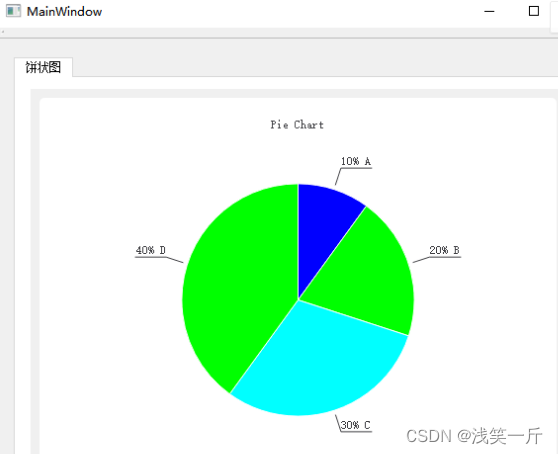
2.核心代码
注意:
1)pro中需要添加
QT += charts
2)界面处理:
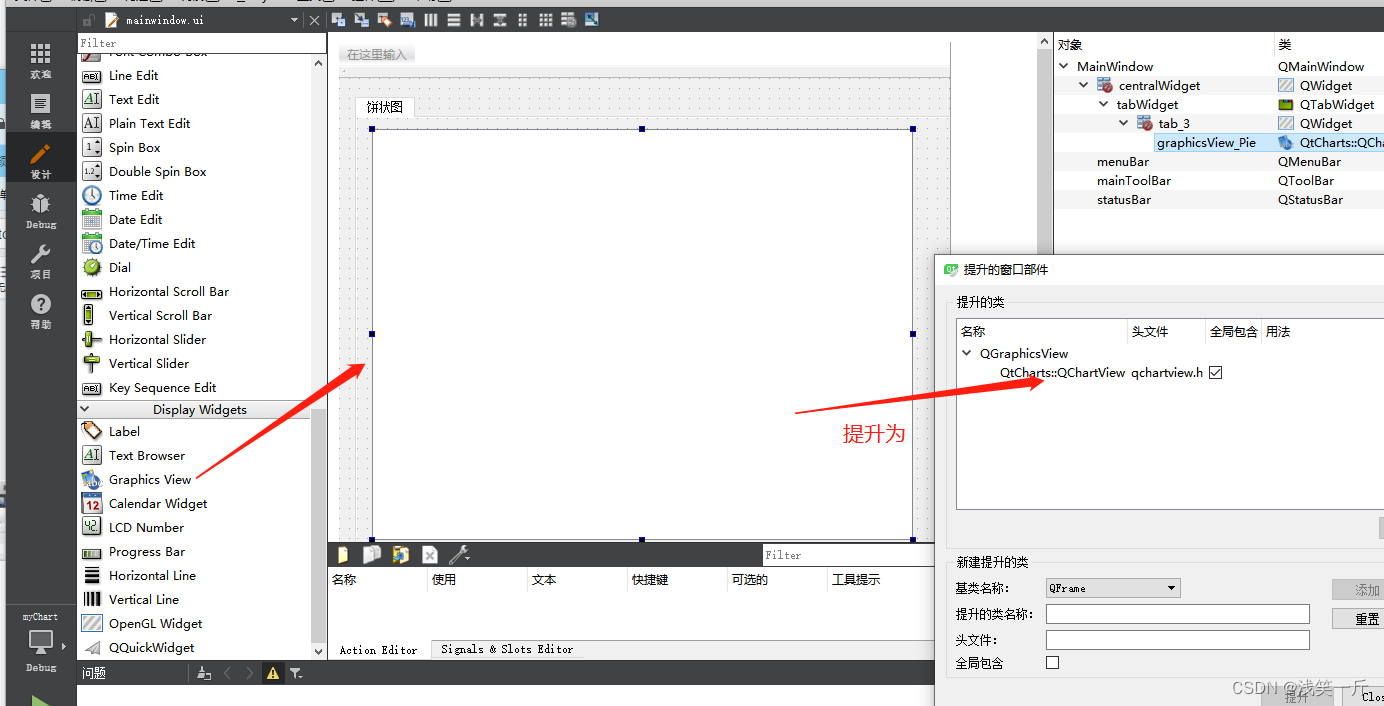
ctchart.h
#ifndef CTCHART_H
#define CTCHART_H
#include <QObject>
#include <QChar>
#include <QtCharts/QChartView>
#include <QValueAxis>
#include <QValueAxis>
#include <QtCharts/QPieSeries>
#include <QtCharts/QPieSlice>
#include "commondef.h"
QT_CHARTS_USE_NAMESPACE
class ctChart : public QObject
{
Q_OBJECT
public:
explicit ctChart();
~ctChart();
static ctChart& getInstance();
void createPie(QChartView *pGraphView, GRAPH_PIE_T stPie);
private:
QChart* m_pChart;
};
#endif // CTCHART_H
ctchart.cpp
#include "ctchart.h"
ctChart::ctChart()
{
}
ctChart::~ctChart()
{
}
ctChart &ctChart::getInstance()
{
static ctChart s_obj;
return s_obj;
}
void ctChart::createPie(QChartView *pGraphView, GRAPH_PIE_T stPie)
{
QChart *pChart = new QChart();
QPieSeries *pSeries = new QPieSeries();
for(int i = 0; i < stPie.VecValues.size(); i++)
{
//饼状分区
QPieSlice* pSlice = new QPieSlice(stPie.VecLabels.at(i), stPie.VecValues.at(i), this);
pSlice->setLabelVisible(true);
pSlice->setBrush(stPie.VecColor.at(i));
//饼状分区加入series
pSeries->append(pSlice);
}
pSeries->setLabelsVisible(true);
//添加pSeries到QChart
pChart->addSeries(pSeries);
//设置显示时的动画效果
pChart->setAnimationOptions(QChart::AllAnimations);
pChart->setTitle("Pie Chart");
//不显示图描述
pChart->legend()->hide();
pGraphView->setChart(pChart);
pGraphView->setRenderHint(QPainter::Antialiasing);
}
commondef.h
#ifndef COMMONDEFS_H
#define COMMONDEFS_H
#include <QObject>
#include <QDebug>
#include <QMetaType>
#include <QVector>
#define MY_DEBUG qDebug() << "[" << __FILE__ << ":" << __FUNCTION__ << ":" << __LINE__ << "] "
#define ACT_ENABLE(act, en) if(act) { act->setEnabled(en);}
#define SAFE_FREE(p) \
do { \
if(p) \
{ \
delete p; \
p = NULL; \
} \
} while(0)
typedef struct Graph_Curve_t
{
double X;
double Y;
int nYMinRange;
int nYMaxRange;
}GRAPH_CURVE_T;
typedef struct Graph_Histogram_t
{
QVector<double> VecX;
QVector<QString> VecXLabels;
QVector<double> VecY;
}GRAPH_HISTOGRAM_T;
typedef struct Graph_Pie_t
{
QVector<QString> VecLabels;
QVector<double> VecValues;
QVector<QColor> VecColor;
}GRAPH_PIE_T;
#endif
mainwindow.h
#ifndef MAINWINDOW_H
#define MAINWINDOW_H
#include <QMainWindow>
#include "ctchart.h"
namespace Ui {
class MainWindow;
}
class MainWindow : public QMainWindow
{
Q_OBJECT
public:
explicit MainWindow(QWidget *parent = nullptr);
~MainWindow();
void initPie();
private:
Ui::MainWindow *ui;
};
#endif // MAINWINDOW_H
mainwindow.cpp
#include "mainwindow.h"
#include "ui_mainwindow.h"
#include <QDateTime>
#include <QTimer>
MainWindow::MainWindow(QWidget *parent) :
QMainWindow(parent),
ui(new Ui::MainWindow)
{
ui->setupUi(this);
initPie();
}
MainWindow::~MainWindow()
{
delete ui;
}
void MainWindow::initPie()
{
GRAPH_PIE_T graphPie;
graphPie.VecLabels.append("10% A");
graphPie.VecLabels.append("20% B");
graphPie.VecLabels.append("30% C");
graphPie.VecLabels.append("40% D");
graphPie.VecValues.append(10);
graphPie.VecValues.append(20);
graphPie.VecValues.append(30);
graphPie.VecValues.append(40);
graphPie.VecColor.append(QColor(0,0,255,255));
graphPie.VecColor.append(QColor(0,255,0,255));
graphPie.VecColor.append(QColor(0,255,255,0));
graphPie.VecColor.append(QColor(0,255,0,0));
ctChart::getInstance().createPie(ui->graphicsView_Pie, graphPie);
}
3.demo工程下载
https://download.csdn.net/download/linyibin_123/87388205



![[oeasy]python0051_ 转义_escape_字符_character_单引号_双引号_反引号_ 退格键](https://img-blog.csdnimg.cn/img_convert/5df40d17e1c9c8b4286963afc6cb5e06.png)

